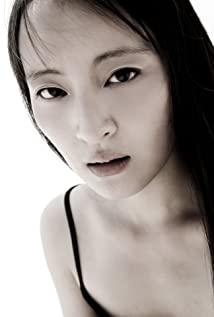Literary Love Theory: The Ecstasy Illusion of Love
——"Best Offer" and the Philosophy of Love
text/empty language
【Love is like an auction】
1) What is love like? According to The Best Bid, love is like an auction, only the best bidder gets it, and sometimes, you don't know if your bid is the best. If you look at love that way, then the highest bid should also be clear, that is all the value you have. Whether such an offer will be worth it or not, however, is another matter. After all, when your love focuses on a specific person, what you find is not an object, not a visually palpable painting, but a person with psychological intentions. For yourself, you are likely to ignore this quality of the object, you will be captured by the beauty of the other party, and you will become ecstatic in one-way love, and you will also forget the false possibility and see it as realization The path of your true desire. This is ecstasy and false love.
["Best Bid" plot]
2) The male protagonist of the "Best Bid" story is a clean-minded painting connoisseur and auctioneer who deliberately keeps his distance from others, especially when dealing with women, he seems to have difficulty seeing the vitality of women directly. Because of this, he is already a white-haired old man, but he remains single. Of course he has love for women, but not for living bodies, but for portraits of women. He devoted his life to collecting numerous outstanding female-themed paintings, which are of great value. This condition of his is "abnormal", but it's not a messy "fetish", after all, it is incompatible with his cleanliness. What he realized in the process of collecting paintings is a kind of "mysterious thing" contained in the paintings, which is rather an ideal, a state of alienation from earthly things that is in line with cleanliness. This alienation from a specific woman until he receives a valuation contract from a mysterious young woman. He was attracted to the gear parts in the woman's "home", and gradually he was also attracted to the unseen woman, who he later discovered seemed to suffer from "agoraphobia" and avoided other people, staying in a in the secret room. This woman's symptoms seem to be in line with his inclination, which provides a rationale for them to come together and "love". He expresses his love for the woman under the guidance of a mechanical engineer, and he falls for her, opens up to her, and shows her his life-long collection. They seem to want to make up for each other's lack and desires in love. If the story of the film ends with such a year-old love, then it will go against people's reason again. Fortunately, this film did not end like this. The ending of this film revealed such a year-old love as a hoax. This scam, led by the mechanical engineer and the mysterious young woman, lured the old man into the trap step by step, just to defraud the old painting connoisseur of the expensive collection. The scam worked, and the old man didn't get the love he "bids with all his heart" and lost his lifelong dependency: his collection of female-themed paintings.
【The reason for mad love】
3] The process of this film is that the old man gradually became mad in front of the beauty of the young woman, obscured his reason, and fell into a false love. This false love or illusion of love is due to objective beauty on the one hand and subjective ideals or tendencies on the other. If love is like an auction, in order to get what you want, you have to make the best bid, then the more critical problem is that even if you make the best bid, you may not be able to get the real thing. It is the beauty presented by the other party that prompts you to make a desperate bid. You may develop a strong love from the visual touch of the other person's beauty, which seems to have surpassed rational judgment at this time. That urge for objective beauty is rooted in the nature of people. Individuals not only see it through their own feelings, but also feel it through the evaluation of others. In an objective atmosphere, individual desires are reinforced. You want to get the other party strongly, but you don't care about whether the other party loves you or not. You forget the false possibility and put your own value on it, like a gambler in a daze, only when you lose everything Sober or sane. After all, the sunshine of reason always seems to be behind the dark cloud of emotion.
4) The ecstasy illusion of love is not only created objectively because of this "visually touchable beauty", but also subjectively created because of that "spiritual fit". "Spiritual fit" is a high-level emotional reason, but it's not necessarily high-level. It belongs to the construction of subjective ideals, and as a reason for love, it tries to incorporate the other party into its own subjective ideals. "Spiritual fit" means that the two parties involved in love are a kind of lack in their own reality. Both parties find themselves in each other's subjective desires, and each other regards the other as a necessary part of achieving psychological self-improvement, and constructs the other as a own psychological ideals. Thus, the person who believes in "heart fit" distinguishes the loved counterpart from the others, seeing it as a shining special; then, or at the same time, the special loving counterpart, and the subjective person With their own special communication, the light of the other party shines into this dark "spirit cave" of the subjective person. Through the reason of "spiritual fit", love becomes the necessary way to sublimate the imperfect self. Through love, the subjective "spirit cave" of the individual is illuminated and warmed. "Spiritual Fit", as a high-sounding love story, appears from time to time in love stories as an ideal concept of love, and its literary appearance also makes the audience with fantasies acquiesce.
5] In this film, the reason why the old man fell into his ideal love can be seen as prompted by those two reasons. The beauty of the young woman became the objective reason for the old man's affection, and the mechanical engineer who cheated with the young woman also strengthened this objective reason as an objective evaluation. For the clean-obsessed painting connoisseur, it was only natural to fall in love with the young woman. The reason why the swindlers rationally carried out their deception is also that they exploited the rationality of "mind fit". The crooks used "agoraphobia" to create a "cave illusion" against the old man. The "agoraphobia" of the young woman disguised her away from other people, and the approach of the old man as a way of self-improvement. And the old man can finally look away from the ideal female figure he found in the painting through this young woman, and look towards and walk towards his love with this specific woman. The emphasis on literature and art also allows people to ignore the disgusting feeling brought by the year-end love, and they can feel relieved that the ideal love is realized. At this time, the audience also deeply felt the heart of the old man. The audience themselves sprouted their own lack of spirituality, and they were also imagining the fit of their souls. However, the film's ending threw cold water on that fantasy. The old man's delighted love turns out to be a hoax or an illusion, and at the end of the film, he sits in the shop with the gears and looks out of the pair with a dry heart. It was probably the quiescent state after the ecstatic illusion of love.
[The Imitation of Love: The Dialectics of True and False]
6] In Best Bid, there is an analogy not only between love and auction, but also between love and works of art and their imitations. Love (contained in human emotion) is like a work of art, it is displayed in the senses in its beauty, and its value is guaranteed by the mystery contained in it. For artworks, if authenticity can be guaranteed in principle, then in specific artwork appreciation, true or false is no longer the primary issue, but beauty or ugliness. In the appreciation of works of art, beauty becomes a value higher than truth. At this time, if the imitation can continue the beauty of the imitation art, even if it is fake, it is also a "real" art. Therefore, it can be said that "there is truth in false things". What we are talking about here is the truth of art appreciation, that is, the beauty that it contains and expresses in feeling. Love is like a work of art, and in love, there are imitations. For love, if the beauty of love can be reproduced or imitated in the imitation of love, then this imitation of love is also a beautiful thing. While time may expose the imitation of love as false, such falsehood is concealed in the feeling and appreciation of the beauty of love, or rather in the ecstasy of it. In the ecstasy of love, the beauty of love exists as a criterion higher than emotional truth and falsehood, it is no longer even the criterion, but the whole basis of the value of the whole person who is in love.
7] When the hero of "Best Bid", the old painting connoisseur, found that his life-long collection in the secret room had been swept away, he found that the liars in the secret room had left a recording, "There are always some crazy people. Things can veil the falsehood." The experienced painting appraiser distinguishes between true and false paintings with his excellent skills, but he failed to discover the true and false of love earlier. This is probably justifiable, because what he encountered in the madness of love was no longer the question of true and false, but the beauty of love that surpassed true and false. And such beauty is something he can't see in painting. In the torrent of the beauty of love, the individual is just a small boat, drifting with it, running aground with it, hitting the rocks with it, falling into the abyss with it.
【The trap of truth, goodness and beauty】
8) In this ecstasy about the beauty of love, we can see the truth of love obscured. From this, the concept of love and its basis has progressed to the relationship between truth and beauty. At this time, goodness must also be introduced into the discussion as an intermediate link. When philosophers preached the "unity of truth, goodness and beauty", they did not get rid of their sophistry attitude, they confused right and wrong like wise men. Yes, the truth, the good and the beautiful can of course be unified, but that is only in the limit state. Only in the absolute idea, or in the so-called philosopher's God, can the truth, the good and the beautiful be unified. In other words, the so-called unity of truth, goodness and beauty is just the unity of truth, goodness, and beauty. And in this actual world, where individuals are divided from each other, and the situation is concrete and relative, in such a world, truth, goodness and beauty are of course not unified. In a specific world, seeing the truth, the good and the beautiful as the unity is a trap set up by sophistry.
9] Truth, goodness and beauty can be used as a set of progressive value standards, but this progressiveness is not the inclusion of the former by the latter, but a negation. Truth is originally the most irresistible value basis, it even surpasses value, but in the specific world, truth is divided by position. True, it is the request of the transcendental value to the value, it is the silence of the value. Goodness becomes the real value basis for entering into value, and goodness is the denial of truth. For the good, not only the true has value, but also the false. In the realization of the good, both true and false are involved. The phrase "white lie," for example, signifies the use of the good by the value of falsehood. Goodness is realized through desire, and in desire, goodness is silenced as objectification, and desire is guided by beauty. Beauty is immediate, it precedes the good, and thus becomes the desire for the good. Beauty is the negation of goodness. This is because in beauty, there is no such thing as the realization of goodness, and evil is also involved in it. The romantics, the philosophical tendency to forget about consequences, make beauty the highest value. In beauty, not only is there an ambiguity between good and evil, but also between true and false. When beauty becomes the object of value's whole-hearted participation, it may be the realization of goodness on the one hand, or the residue of evil on the other hand. For the latter, it becomes the most empty value. At this time, beauty is denied, and it returns to truth. And in this truth that denies beauty, ugliness will surround the desire person as a state of truth. In this progression of truth, goodness and beauty, there are also the participation of false, evil and ugly, and thus they form a value cycle of existence.
10] For love, the above-mentioned negative cycle of truth, goodness and beauty means that love does not necessarily have the unity of truth, goodness and beauty. In fact, because the individuals involved in love are in a relative world, it can also be said that love must not have the unity of truth, goodness and beauty. Those involved in love must make choices. In contrast, goodness and beauty can be created by love, but the illusion must always linger.
[Literature's "Secret Room Love View"]
11] The kind of love concept that combines "beauty of love" and "spiritual fit" is actually just a literary conception, it is "the concept of love in the secret room". The emergence and collapse of love in "Best Bid" has the characteristics of such a "secret room love view". The so-called "closed room love concept" means that it has a certain isolated context separated from reality. Such a view of love often meets people's expectations for love and life through beautiful illusions or white lies. For such a conception, true love or false love is probably just one thought: a thought of heaven and a thought of hell. Such a view of love is not the substantive expression of love, and correspondingly, the destruction of such a view of love does not mean that love is vain.
12] Love is a combination of physical and psychological, and physiology has an ontological priority, while love psychology is only a phenomenon. The core of the literary and artistic concept of love in the secret room is the psychology of love, and the psychology of love has become the origin of this concept of love. Such a considerable love is conceptualized, and the chain of reality is left out of the secret room of love. Even if the chain of reality participates in the plot, it often exists as a premise for the soul to be portrayed. The mind or psychology involved in love is the center of this view of love. Therefore, this view of secret room love is a way of taking reality out of context, and it may be in an inverted relationship or a dislocated relationship with reality. However, even "real people" take reality out of context and are in an upside-down or dislocated relationship to reality. In this way, the concept of love in the secret room is not so false, after all, it also meets people's expectations, and people always like to have expectations.
View more about The Best Offer reviews











